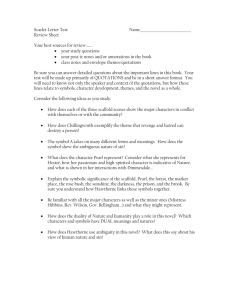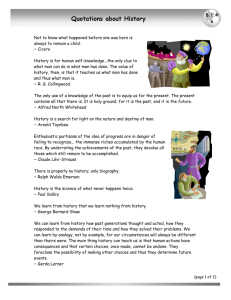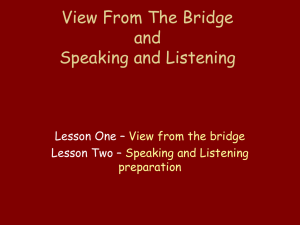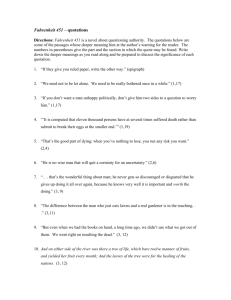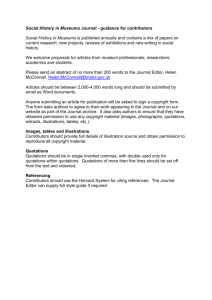The Kite Runner Chapter Presentations
advertisement
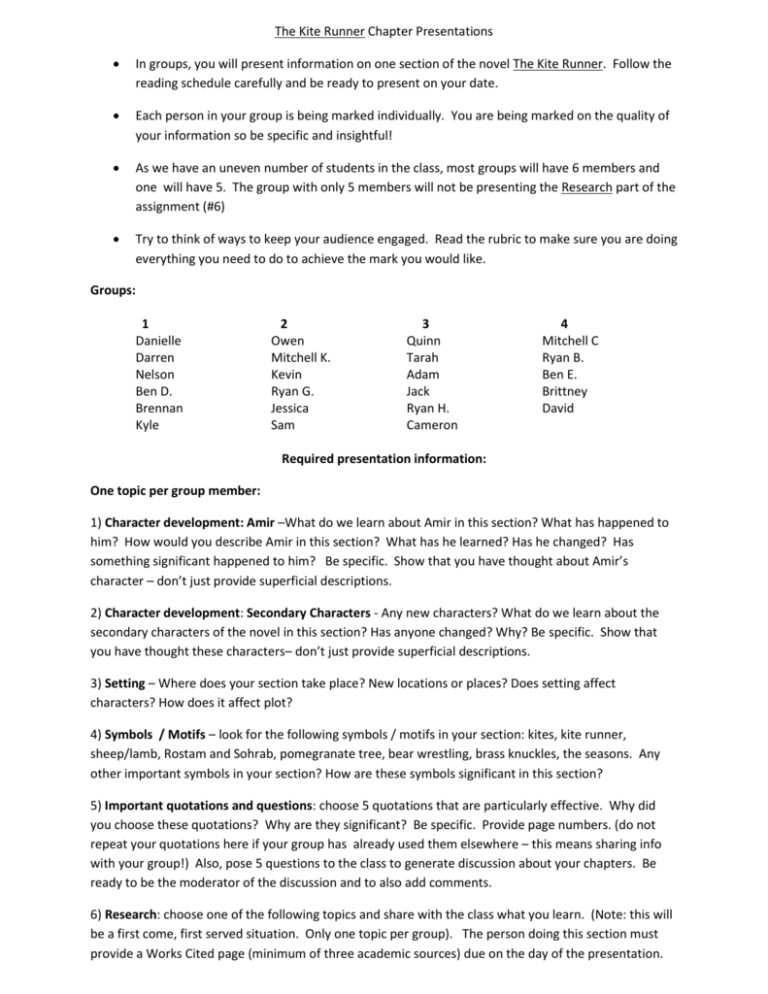
The Kite Runner Chapter Presentations In groups, you will present information on one section of the novel The Kite Runner. Follow the reading schedule carefully and be ready to present on your date. Each person in your group is being marked individually. You are being marked on the quality of your information so be specific and insightful! As we have an uneven number of students in the class, most groups will have 6 members and one will have 5. The group with only 5 members will not be presenting the Research part of the assignment (#6) Try to think of ways to keep your audience engaged. Read the rubric to make sure you are doing everything you need to do to achieve the mark you would like. Groups: 1 Danielle Darren Nelson Ben D. Brennan Kyle 2 Owen Mitchell K. Kevin Ryan G. Jessica Sam 3 Quinn Tarah Adam Jack Ryan H. Cameron 4 Mitchell C Ryan B. Ben E. Brittney David Required presentation information: One topic per group member: 1) Character development: Amir –What do we learn about Amir in this section? What has happened to him? How would you describe Amir in this section? What has he learned? Has he changed? Has something significant happened to him? Be specific. Show that you have thought about Amir’s character – don’t just provide superficial descriptions. 2) Character development: Secondary Characters - Any new characters? What do we learn about the secondary characters of the novel in this section? Has anyone changed? Why? Be specific. Show that you have thought these characters– don’t just provide superficial descriptions. 3) Setting – Where does your section take place? New locations or places? Does setting affect characters? How does it affect plot? 4) Symbols / Motifs – look for the following symbols / motifs in your section: kites, kite runner, sheep/lamb, Rostam and Sohrab, pomegranate tree, bear wrestling, brass knuckles, the seasons. Any other important symbols in your section? How are these symbols significant in this section? 5) Important quotations and questions: choose 5 quotations that are particularly effective. Why did you choose these quotations? Why are they significant? Be specific. Provide page numbers. (do not repeat your quotations here if your group has already used them elsewhere – this means sharing info with your group!) Also, pose 5 questions to the class to generate discussion about your chapters. Be ready to be the moderator of the discussion and to also add comments. 6) Research: choose one of the following topics and share with the class what you learn. (Note: this will be a first come, first served situation. Only one topic per group). The person doing this section must provide a Works Cited page (minimum of three academic sources) due on the day of the presentation. -Islam in Afghanistan -Taliban -Life in Afghanistan in the 1970s -Life in Afghanistan today -Pashtuns and Hazaras -Communist occupation in Afghanistan -Life as a woman in Afghanistan -History of kite running and its importance to Afghan culture -Drug trade in Afghanistan -Canada’s involvement in Afghanistan -another topic that interests you regarding Afghanistan? Other important information: 1. This is a presentation; not an opportunity for you to read aloud! Present your information to the class in an engaging way that keeps us informed and interested. Also, you should KNOW your presentation well. You are NOT permitted to have any notes / cue cards with you during the presentation. You will only be allowed to include brief information on your visual aid (eg. power point, prezi, etc.) that you may refer to during your presentation (for further clarification, see #3 below) 2. Quotations: Each person must also include in their presentation a minimum of 3 quotations from the novel to support a point (even the person doing #6) Be sure to choose effective quotations that highlight an important aspect of the novel or reveal something significant about a character. Quotations must be seen by the audience and be formatted properly (with author and page #) 3. Visual: The visual component of this assignment is an opportunity for students to share information about their topic in a way other than using words. Remember, a picture is worth a thousand words! Include timelines of events, graphs, maps, pictures, illustrations, photographs, stories, newspaper photos and headlines ... things that should be seen and will make your visual more appealing! In order to assist you in your presentation you can also include on your visual: a list of up to 6 “bullet” points each bullet point should include information no longer than 8 – 10 words these bullet points are there to remind you of what you need to say, as you are not permitted to use any other notes (no paper in your hands, please!) the audience MUST be able to see your quotations (eg. put them in your powerpoint or use the Elmo projector.) You may read these quotations – you are not required to memorize your quotations. 4. Audio-Visual Requirements: If you have any special audio-visual requirements, please see Ms.Hughson PRIOR to your presentation date to organize your needs. 5. Organize! You should carefully plan the presentation, with an introduction and conclusion. Be sure to consult with other members in your group to organize the order of the presentation and to ensure that information and quotations are not repeated in the presentation. Should you meet as a group at lunch a few days before the presentations to make sure everything is ready?
